Enhance Your Eyebrow Thickness: Proven Strategies
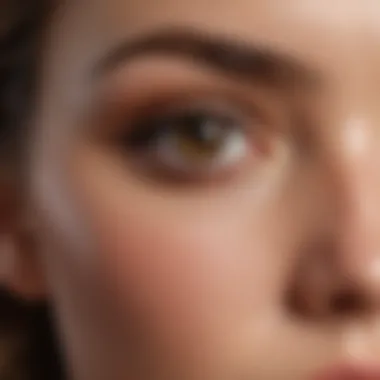
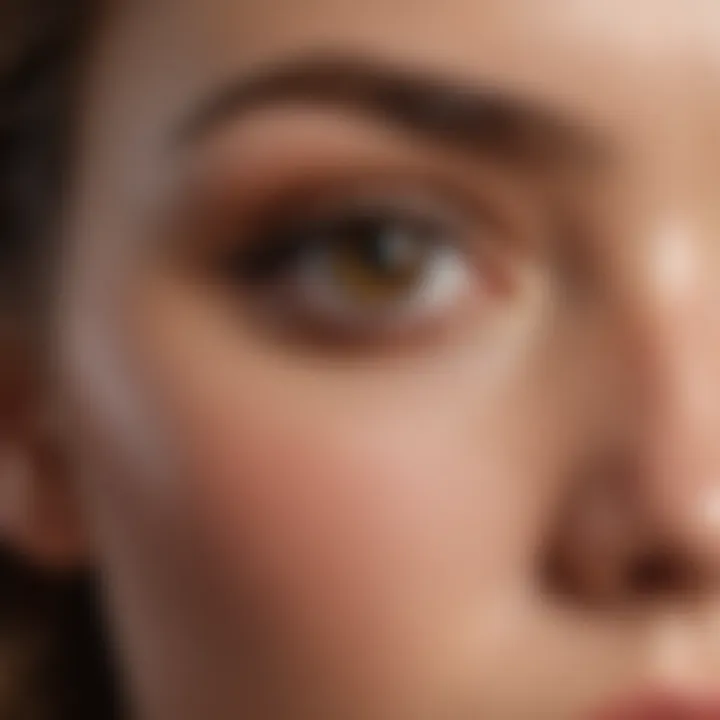
Intro
Achieving thicker eyebrow hair is a pursuit that resonates with many individuals, particularly women seeking to enhance their facial features. Eyebrows play a significant role in framing the face and expressing emotions, making their appearance crucial to overall aesthetics. As beauty trends continue to evolve, the demand for fuller, more prominent eyebrows remains a constant. This article presents an in-depth exploration of various strategies to achieve thicker eyebrows, focusing on natural methods, dietary considerations, cosmetic solutions, and professional interventions.
Understanding the biological factors influencing hair growth is vital for implementing effective practices. Factors such as genetics, hormonal changes, and overall health contribute significantly to eyebrow thickness. By acknowledging these elements, one can tailor their approach toward eyebrow enhancement more effectively.
In this guide, readers will gain insights into sustainable beauty practices, the importance of nutrition, and how specific products available in the market can aid in achieving desired results. The discussion will explore tips and how-tos, alternative methods, and the influence of individual beauty on society, tapping into the diverse beauty industry landscape.
Tips and How-Tos
To embark on the journey towards fuller eyebrows, consider the following practical steps that can be seamlessly integrated into daily routines.
Natural Remedies
There are many natural methods that may help promote eyebrow growth.
- Castor Oil: This oil is rich in ricinoleic acid, which can stimulate hair follicles. Apply it nightly with a cotton swab for best results.
- Coconut Oil: Coconut oil nourishes hair and may boost thickness. Massage it into the eyebrows once a day.
- Aloe Vera: This plant contains enzymes that stimulate hair growth. Apply fresh aloe vera gel on the eyebrows before bedtime.
Dietary Considerations
Good nutrition plays a critical role in hair health. To potentially enhance eyebrow thickness, incorporate the following foods into your diet:
- Proteins: Eggs and fish provide essential amino acids vital for hair growth.
- Vitamins: Foods rich in Vitamins A, C, and E, like fruits and vegetables, support overall health.
- Minerals: Biotin and zinc are particularly important. Nuts, seeds, and leafy greens are excellent sources.
Grooming Techniques
Proper grooming can also make a noticeable difference in the appearance of eyebrows:
- Regular Trimming: Keeping hairs trimmed helps maintain a neat appearance and encourages regrowth.
- Tweezer Usage: Pluck stray hairs to accentuate the desired shape while avoiding over-plucking.
- Brows Filling Products: Use products like brow pencils or powders to create the illusion of thickness when needed.
"A well-groomed eyebrow has the power to change the entire architecture of the face."
Sustainable Practices
As awareness of sustainable beauty grows, many individuals seek to incorporate eco-friendly practices into their grooming routines. Here are some ways to achieve that.
- Choose Natural Products: Opt for products containing natural ingredients to minimize environmental impact.
- DIY Remedies: Create homemade eyebrow serums and gels using simple ingredients, reducing dependence on store-bought items.
- Recyclable Packaging: Support brands that offer eco-conscious packaging to help reduce waste.
For skincare or haircare lines, consider brands like The Body Shop or Lush Cosmetics, known for their commitment to sustainability.
Celebrating Diversity in Beauty
Diversity in beauty is an essential aspect to recognize. Eyebrow shapes, styles, and traditions may vary across cultures, making it essential to celebrate these differences.
- Inclusive Beauty Brands: Companies such as Fenty Beauty and e.l.f. Cosmetics cater to a wide range of skin tones and beauty preferences, promoting inclusivity in their offerings.
- Cultural Variations: Different societies have varied approaches to eyebrow grooming. In some cultures, thicker eyebrows are seen as a symbol of beauty, while in others, more finely shaped brows are preferred.
This broadens the perspective on beauty standards, promoting a richer understanding of what beauty can encompass.
As this article unfolds, it becomes clear that achieving thicker eyebrow hair is an amalgamation of methods. By harnessing natural remedies, making informed dietary choices, and celebrating the diversity in beauty practices, one can effectively work towards the goal of fuller eyebrows.
Understanding Eyebrow Hair Growth
Understanding eyebrow hair growth is crucial for anyone seeking to achieve thicker eyebrows. Hair growth is not just about the visible results but also about the underlying biological processes. Every aspect of hair growth plays a significant role in determining eyebrow density and appearance.
To understand this better, it's vital to explore the hair growth cycle and how different factors can influence the thickness of eyebrow hair. Through this knowledge, individuals can tailor their approaches to eyebrow enhancement effectively.
The Hair Growth Cycle
The hair growth cycle consists of three main phases: anagen, catagen, and telogen.
- Anagen Phase: This is the active growth stage. During this time, hair follicles are actively dividing and producing new hair. The duration of the anagen phase varies, but it generally lasts several weeks for eyebrow hair.
- Catagen Phase: This transitional phase lasts about two to three weeks. During catagen, the hair follicle begins to shrink and detaches from the blood supply. As a result, growth slows significantly.
- Telogen Phase: In this resting stage, which lasts around a few months, the hair is not growing. Eventually, the hair will shed, and a new one will begin the cycle again in the anagen phase.
Understanding these phases can help individuals identify the best time frames for hair treatments, knowing when it might be most effective to promote further growth.
Factors Influencing Hair Thickness
Several factors can influence the thickness of eyebrow hair. These factors can be intrinsic, such as genetics, or extrinsic, meaning external influences. Some crucial elements include:
- Hormones: Hormonal fluctuations can affect hair density. Conditions such as thyroid issues can lead to hair thinning.
- Health Conditions: Certain health issues, like alopecia or nutritional deficiencies, can drastically affect eyebrow thickness.
- Environmental Factors: Exposure to harmful chemicals or pollutants can weaken hair follicles, reducing overall hair density.
Gaining awareness of these elements allows for better management of hair health, ultimately contributing to fuller eyebrows.
Genetics and Hair Density
Genetics plays a significant role in determining hair density. The genetic makeup dictates the number of hair follicles present and the overall potential for growth. Individuals with a family history of thick eyebrows may have a genetic advantage in achieving similar results. Factors influenced by genetics include:
- Hair Follicle Density: Some may naturally have a higher density of hair follicles, resulting in thicker hair.
- Texture of Hair: Genetic factors can also determine the coarseness or fineness of the hair itself.
- Growth Patterns: Variations in hair growth can be hereditary, meaning that unique patterns may also be passed down through generations.
By understanding the genetic predispositions, individuals can set realistic expectations in their quest for thicker eyebrows.
Natural Remedies for Thicker Eyebrows
Natural remedies can be a viable option for women looking to achieve thicker eyebrows. These methods typically utilize ingredients from nature, known for their beneficial properties. The approach focuses on promoting hair growth through natural stimulation rather than relying solely on artificial products, which may have adverse effects. Natural remedies are often preferred due to their less invasive nature and less risk of skin irritation. Incorporating these remedies into a daily routine can facilitate long-term results without severe side effects. Below, we explore various effective options that can help improve eyebrow thickness.
Essential Oils
Essential oils have gained popularity in promoting thicker eyebrows. They are concentrated plant extracts known for their ability to nourish hair follicles and stimulate growth. Using essential oils can be a cost-effective and natural method to enhance eyebrow volume. The two oils that stand out in this category are castor oil and rosemary oil.
Castor Oil Benefits
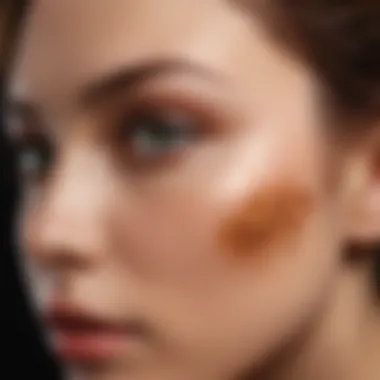
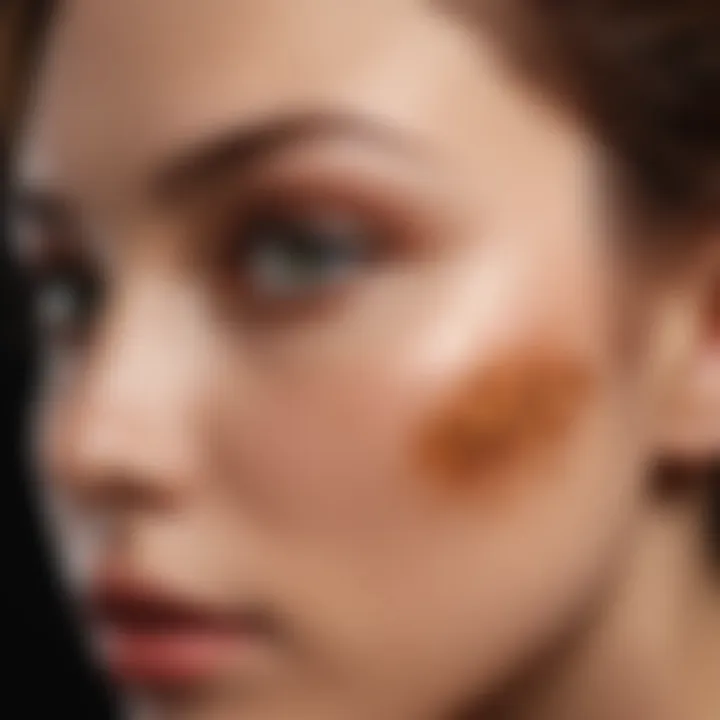
Castor oil is well-known for its potential to boost hair growth. Rich in ricinoleic acid, it can promote blood circulation in the skin, enhancing nutrient delivery to hair follicles. This oil also has antifungal properties, which help maintain skin health beneath the hair. Castor oil is a popular choice for women aiming for fuller eyebrows because it is both safe and effective.
One disadvantage could be that castor oil is quite thick and may require multiple applications to fully absorb into the skin, which might not be convenient for everyone.
Rosemary Oil Effects
Rosemary oil has been linked to hair health for centuries. It is believed to stimulate blood circulation, which is essential for hair growth. Its antioxidant properties may also aid in preventing free radicals’ damage to hair follicles. This makes rosemary oil a popular option among women targeting eyebrow enhancement.
However, individuals should note that rosemary oil should be diluted with a carrier oil before application. Undiluted usage may lead to skin irritation.
Herbal Treatments
Herbal treatments provide a natural means to strengthen eyebrow hair. They can nourish hair roots effectively while promoting overall health of the skin. Two effective herbal remedies are ginseng and aloe vera.
Ginseng
Ginseng is renowned for its health benefits, particularly its ability to promote hair growth. It contains compounds that improve circulation and spur hair follicles into action. For women seeking thicker eyebrows, incorporating ginseng into their routine could yield positive results.
Moreover, ginseng is usually easy to find in forms such as teas and supplements, making it accessible. There are cases where individuals report reactions to ginseng, so caution is advised.
Aloe Vera
Aloe vera is another powerhouse for eyebrow growth. This plant is rich in vitamins and has a soothing effect on the skin. The nutrients in aloe vera can contribute to better hair maintenance and growth. This quality makes it a beneficial choice in this article.
Many people use aloe vera gel directly from the plant, making it a simple, natural remedy. However, for those allergic to plants in the lily family, it may cause irritation.
Home Remedies and DIY Treatments
Home remedies can be effective in promoting eyebrow thickness. They often require simple ingredients available at home. Among these, eyebrow masks and gels/creams provide versatility.
Eyebrow Masks
Eyebrow masks can enhance hair growth while also providing nourishment. They can be made from various ingredients like egg yolks, coconut oil, and essential oils. The proteins in egg yolk promote hair strength while coconut oil aids in moisture retention.
A significant advantage of eyebrow masks is that they can be customized to suit individual preferences and needs. On the downside, they require application time and may leave a residue if not washed off properly.
Gels and Creams
Gels and creams specially formulated for eyebrow growth can aid in achieving thicker eyebrows. Products infused with nourishing compounds can strengthen hair follicles and promote new growth. They are convenient to apply and often designed for easy use.
However, not all products are equally effective for every person. Some may find that specific formulations work better than others, which can require a bit of trial and error.
Remember, consistency is key with natural remedies. Results may take time, but patience often leads to successful outcomes.
Nutritional Aspects Influencing Eyebrow Health
Nutrition plays a critical role in hair health, including the hair on brows. A nutritious diet provides the building blocks for hair growth and thickness. Eyebrows require specific vitamins and minerals to grow stronger and denser. By focusing on dietary elements, one can stimulate hair follicles and enhance overall eyebrow appearance. In this section, we explore relevant vitamins, minerals, and dietary recommendations that contribute significantly to thicker eyebrows.
Vitamins for Hair Growth
A variety of vitamins support hair growth. Two vitamins stand out in their effectiveness, which we will discuss below.
Biotin
Biotin, also known as vitamin H, is essential for hair health. It promotes keratin production, a protein crucial for hair structure. High biotin levels can enhance hair growth and minimize hair loss. Its importance is well-recognized in product formulations aimed at improving hair health. Biotin is often supplemented in beauty and nutritional products, making it a popular choice among individuals seeking thicker brows.
However, it’s worth noting that while biotin is widely marketed, some individuals may not notice significant changes in brow thickness. Consistency is critical when using biotin for results, as changes in hair growth may take time to appear.
Vitamin E
Vitamin E is a powerful antioxidant that protects hair follicles from oxidative stress. It helps by improving blood circulation in the scalp and brow area, promoting healthier hair growth. Vitamin E oil is often used in topical treatments for hair health, making it a convenient option for daily care. The oil nourishes the skin and brow hair, leading to an enriched appearance.
On the downside, excessive use can lead to greasiness, which some may find unappealing. Moderate application is key for optimal results without a heavy feel.
Minerals Essential for Thicker Eyebrows
Minerals also play a role in hair health. Here we examine two crucial minerals that support eyebrow growth.
Zinc
Zinc is vital for hair tissue growth and repair. It helps keep the oil glands around hair follicles functioning correctly. Adequate zinc levels can prevent hair loss and promote growth, making it an important mineral for achieving thicker eyebrows.
Its presence in various food sources, such as meat, seeds, and nuts, makes it relatively easy to incorporate into a diet. Despite its benefits, too much zinc can lead to adverse outcomes like nausea. Thus, finding the right balance is crucial.
Iron
Iron is essential for delivering oxygen to hair follicles. Hair cells need oxygen to grow and thrive. A deficiency in iron can lead to hair loss and thinning. Therefore, ensuring a consistent intake of iron-rich foods can significantly impact eyebrow thickness.
Iron-rich foods include lentils, spinach, and red meat. However, iron is better absorbed when consumed with vitamin C, so combining these food sources can enhance effectiveness. Overconsumption of iron can lead to toxicity, which is another reason moderation is important.
Dietary Recommendations
Certain dietary choices can directly enhance hair health. Here are important recommendations to consider.
Proteins to Focus On
Proteins are the building blocks of hair. It’s essential to include sufficient protein in your diet for stronger, thicker eyebrow hair. Eggs, fish, beans, and dairy are great sources. A varied protein intake ensures all necessary amino acids are available for optimal growth and repair.
Incorporating diverse protein sources can keep the diet interesting while supporting hair health.
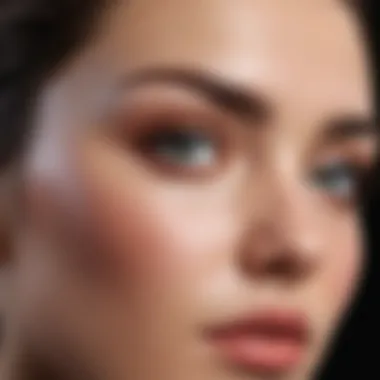
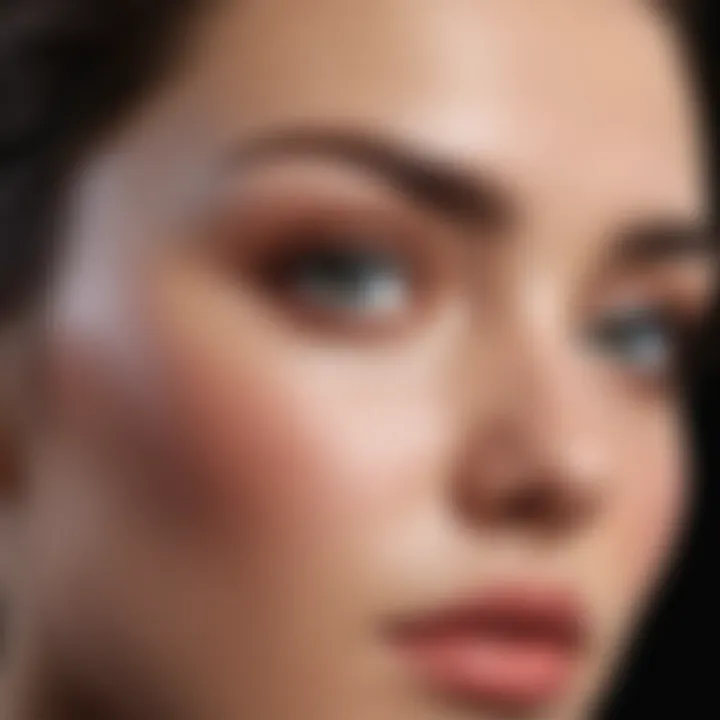
Foods Rich in Omega Fatty Acids
Foods high in omega fatty acids improve hair strength and shine. Fatty fish like salmon, walnuts, and chia seeds are excellent choices. Omega fatty acids nourish hair from the inside out, promoting a healthy hair growth cycle.
These foods support overall skin health too, further enhancing eyebrow appearance.
Consider integrating these foods into your daily meals to develop a solid foundation for eyebrow growth. Consistent attention to nutritional aspects can yield promising results for achieving thicker, fuller eyebrows.
Cosmetic Products for Eyebrow Volume
The quest for thicker eyebrows often leads individuals to consider using cosmetic products. By understanding the attributes of these products, one can make informed choices. Cosmetic products designed for eyebrow volume include serums, pencils, powders, and gels. Each category serves a unique purpose and offers different advantages.
Investing in the right cosmetic products can enhance appearance and boost self-confidence. Such products not only improve the volume of eyebrow hair visually but may also offer long-term benefits like hair growth stimulation or maintenance of healthy hair follicles.
Eyebrow Serums
Eyebrow serums are specifically formulated to promote hair growth and enhance volume. They often contain active ingredients designed to strengthen hair and encourage new growth.
Common elements in eyebrow serums include:
- Peptides: Known for their role in hair strength and thickness.
- Biotin: A vitamin that supports keratin production, essential for hair structure.
- Natural Oils: Ingredients like castor oil deliver essential nutrients.
Using a serum regularly can tend to improve the overall health and appearance of eyebrow hair. This makes them a worthwhile addition to your beauty routine, especially if your goal is not only to fill in but also to develop denser brows over time.
Brow Pencils and Powders
For immediate results in achieving thicker brows, brow pencils and powders can serve as effective solutions. These products help fill in gaps and define the shape of the eyebrows.
When selecting brow pencils and powders, consider:
- Color Matching: Ensuring the product matches your natural hair color for a cohesive look.
- Formulation: Choose between waxy pencils for a precise application or powder for a softer finish.
Using brow products can dramatically change your appearance. They provide a quick fix for sparse areas and effectively disguise thinning brows. Regularly applying these products can add the illusion of fuller brows without any long-term commitment.
Tinting and Brow Gels
Tinting and brow gels are useful for maintaining the appearance of thicker eyebrows. Tints can add dimension and color, making eyebrows appear more defined and voluminous. Brow gels help shape and hold the hairs in place, adding to the overall thickness.
Key considerations include:
- Temporary vs. Permanent Tints: Assess how long you want the color to last before choosing.
- Clear vs. Tinted Gels: Clear gels provide a natural finish, whereas tinted gels offer an additional layer of color.
Incorporating these products effectively into your daily routine can yield significant improvements in the look of your eyebrows over time.
"Cosmetic products can provide immediate results and complement long-term growth strategies."
By incorporating these cosmetic products into your eyebrow enhancement regimen, you can achieve a fuller and more defined look while also working towards healthier hair growth.
Professional Treatments for Eyebrow Enhancement
Professional treatments play a crucial role in the pursuit of thicker eyebrows. Such methods tend to provide results that are more immediate and significant compared to natural remedies or at-home techniques. They often use advanced technology or techniques that require a trained professional. Understanding these treatments helps in making informed decisions about enhancing one's eyebrows effectively and safely.
Microblading
Microblading is a semi-permanent cosmetic tattooing technique that involves the use of a fine blade to deposit pigment into the skin. This method creates the illusion of fuller and more defined eyebrows. It is particularly beneficial for those with sparse, thin, or over-plucked eyebrows.
Benefits of Microblading:
- Lasting Results: The effects can last anywhere from one to three years, depending on skin type and aftercare.
- Customizable Shape: Each eyebrow can be tailored to suit a person's face structure and individual preferences.
- Minimal Downtime: The healing process is relatively quick, allowing individuals to return to their daily activities.
While microblading offers numerous rewards, there are some considerations. The procedure does involve a small risk of infection or allergic reaction to the pigments used. Thus, finding a certified and experienced technician is crucial.
Eyebrow Transplants
Eyebrow transplants are a more invasive option aimed at those looking for permanent results. This technique involves harvesting hair follicles from other parts of the body, typically the scalp, and implanting them into the eyebrow area. It is a suitable option for individuals with very thin eyebrows or those who have experienced significant hair loss due to various reasons, including genetics or trauma.
Benefits of Eyebrow Transplants:
- Natural Growth: The transplanted hairs will grow like natural eyebrow hair, allowing for easier shaping and maintenance.
- Permanent Solution: Unlike microblading, eyebrow transplants offer a permanent solution, since the follicles are live and continue to grow over time.
- Versatility: The results allow for styling and grooming just like natural eyebrow hair.
However, eyebrow transplants can come with higher costs and longer recovery times compared to other treatments. There is also a potential for the transplanted hairs to grow out in an undesirable direction, which may require additional grooming.
PRP Treatments
Platelet-Rich Plasma, or PRP treatments, have emerged as a promising non-surgical procedure for promoting hair growth in areas where it is thin or sparse. This treatment involves drawing a small amount of the patient's blood, processing it to isolate the platelet-rich plasma, and then injecting it into the eyebrow area. PRP harnesses the body's natural healing process to stimulate hair follicles, encouraging existing hair to thicken and promoting new hair growth.
Benefits of PRP Treatments:
- Safe and Natural: Since it uses the patient’s own blood, there is a minimal risk of allergic reactions.
- Improves Hair Thickness: Studies have shown that PRP can effectively enhance the thickness and density of eyebrow hair.
- Non-Invasive: This is a relatively quick process with minimal discomfort, and it does not require significant downtime.
It is important to note that multiple sessions are usually required to see optimal results. The effectiveness of PRP treatments can also vary based on individual factors, including the underlying health of hair follicles.
For those considering professional treatments, assessing individual needs and consulting with a qualified specialist is essential.
Overall, professional treatments for eyebrow enhancement provide various options tailored to different needs. Understanding the differences between microblading, eyebrow transplants, and PRP can help individuals choose the right path toward fuller eyebrows.
Daily Care Tips for Eyebrow Maintenance
Maintaining healthy eyebrows is crucial in promoting their thickness and overall appearance. Daily care can make a significant difference, ensuring that your brows are not only fuller but also well-groomed. This section delves into specific practices that can enhance brow health, such as grooming, avoiding damage from excessive plucking, and moisturizing the skin to create an ideal environment for hair growth.
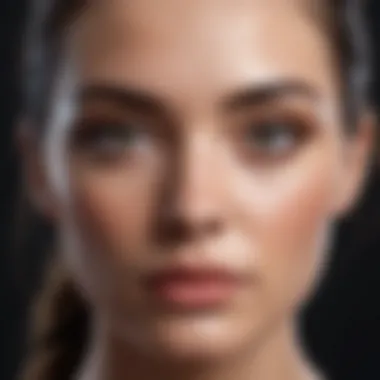
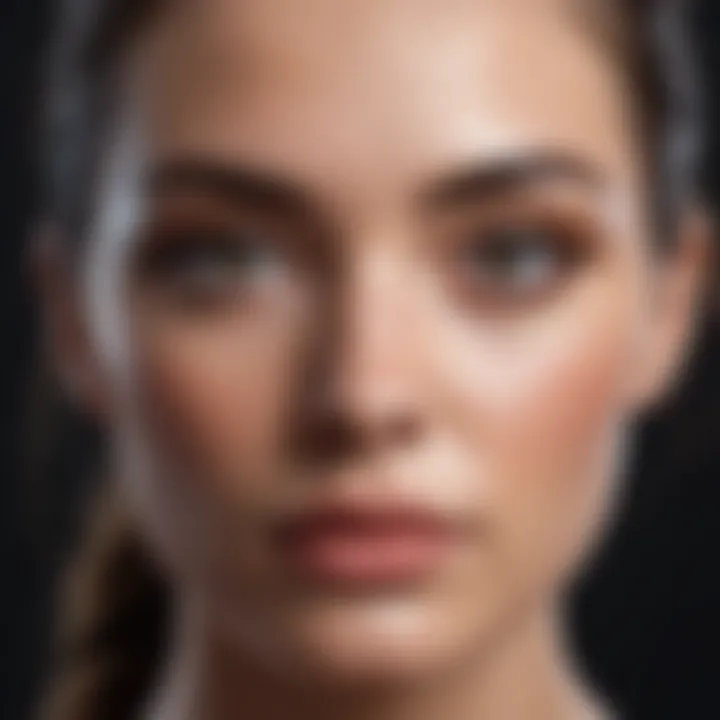
Regular Grooming
Regular grooming is an essential part of maintaining eyebrow health. By keeping your eyebrows in shape, you help them appear neater and more voluminous. This involves trimming any overly long hairs and brushing the brows into place. When grooming, tools like brow brushes and scissors should be used carefully. Too much shaping can lead to unevenness and hinder growth, so it’s important to keep a light hand.
Grooming also allows you to assess the natural growth pattern of your brows. Adjustments can be made accordingly, ensuring that they look their best without compromising thickness.
Avoiding Over-Plucking
Over-plucking is a common issue that can have detrimental effects on eyebrow thickness. While it may seem tempting to shape your brows sharply, overzealous plucking can damage hair follicles, leading to slower growth or even bald patches. It is wise to keep your plucking to a minimum, focusing only on stray hairs that disrupt the shape. When plucking, try to follow the natural arch of your brows, which can help maintain a fuller and more natural look. Consulting a beauty professional for shaping can also be helpful if you feel unsure about how much to remove.
Moisturizing the Skin
Moisturizing the skin surrounding your eyebrows is often overlooked, but it plays a critical role in promoting healthy hair growth. When the skin is well-hydrated, it creates a conducive environment for hair follicles. Use gentle, hydrating products that are suitable for facial skin. Ingredients like cocoa butter, jojoba oil, and aloe vera are excellent choices to nourish the area. Applying a light moisturizer daily can improve skin elasticity, reducing the risk of irritation that can disrupt hair growth.
Additionally, this practice can stimulate blood circulation, further encouraging hair growth. Be consistent, as daily moisturization can significantly affect the health and thickness of your eyebrow hair over time.
Common Myths About Eyebrow Growth
Understanding common myths surrounding eyebrow growth is essential for anyone seeking to enhance the thickness of their eyebrows. These misconceptions can lead to ineffective practices, undue frustration, and an overall negative perception of one’s self-image. By recognizing what is fact versus fiction, individuals can make informed choices that actually aid in achieving fuller brows. This section will elucidate these myths, providing clarity on what really contributes to eyebrow growth.
Fact vs. Fiction
When it comes to eyebrow growth, many people hold onto certain beliefs that lack scientific backing. Here are some notable examples:
- Myth: Plucking Eyebrows Makes Them Grow Back Thicker. This is a widespread belief. In reality, plucking can damage the hair follicle, resulting in finer regrowth or, in some cases, no regrowth at all.
- Myth: Eyebrow Growth Products Work Instantly. There is also a notion that serums will deliver overnight results. However, consistency and time are essential. Hair growth cycles take several weeks to show noticeable changes.
- Myth: Stress Doesn’t Affect Eyebrows. While many might think that stress only impacts overall health, it can also lead to hair loss, including eyebrows. Managing stress is crucial for maintaining hair health.
By understanding these myths, individuals can avoid falling into traps that undermine their efforts. This knowledge can motivate them to adopt healthy care habits that genuinely improve eyebrow thickness.
Debunking Popular Misconceptions
Several popular misconceptions about eyebrow growth can hinder progress. Below are some widespread beliefs and the truths that debunk them:
- Shaving Your Eyebrows Leads to Thicker Growth. This misconception persists despite being untrue. Shaving bluntly cuts the hair, making it feel coarser but does not influence the thickness or growth rate itself.
- You Can Grow Eyebrows Back in a Day. A common falsehood suggests that one can immediately restore their eyebrows once they are plucked. Hair growth is a gradual process and requires patience.
- All Hair Types Require the Same Treatment. It is not accurate to generalize care practices. Different hair types, like curly or straight, have unique growth patterns and care needs. Tailoring a routine based on one's hair type can lead to better outcomes.
- Using Hair Products on Eyebrows is Safe. Many assume any hair product suitable for scalp hair can work for eyebrows. However, these products often contain harsh chemicals that can irritate the delicate skin around the eyes, possibly leading to adverse effects.
Understanding Different Hair Types
In the quest for achieving thicker eyebrow hair, it is crucial to understand how different hair types contribute to overall thickness and appearance. Hair texture and curl pattern can significantly influence the perceived fullness of eyebrows. This exploration is not merely aesthetic; it also encompasses how different types require specific care and grooming techniques. Knowing your hair type allows you to select the most effective methods for enhancement.
Curly vs. Straight Hair
Eyebrow hair can be either curly or straight, and this distinction influences not only how the brows look but also how they behave. Curly eyebrow hair often appears denser due to its natural volume and movement. However, it may also be prone to dryness and frizzing. This necessitates a different care approach, including the use of moisturizers and oils to keep the hair soft and manageable.
On the other hand, straight eyebrow hair tends to lie flat, which can make it appear sparser. This hair type may benefit from volumizing products or techniques that create a fuller look. Understanding these dynamics helps in selecting the right grooming methods.
How Texture Affects Thickness
The texture of eyebrow hair plays a pivotal role in its thickness. Fine hair lacks the diameter to appear thick even when abundant, while coarse hair is naturally more voluminous. Therefore, individuals with coarse hair may need to emphasize maintenance to keep their brows looking well-groomed. They might also find that they can pull off bolder shapes more easily, giving the illusion of density.
For those with fine hair, strategies may involve using fibers or setting products to enhance thickness visually. Additionally, regular care practices, such as exfoliating the skin beneath the brows, can promote healthier hair growth, regardless of texture.
By understanding your specific hair type, you can tailor your eyebrow care routine for optimal thickness and fullness.
In summary, recognizing the differences in hair type is not just about aesthetics but also about recognizing the unique needs each variety presents. By aligning your care techniques with your specific eyebrow hair type, you can enhance the thickness and overall appearance of your brows.
Psychological Impacts of Eyebrow Appearance
Eyebrows play a significant role in shaping not just our facial aesthetics, but also our psychological well-being. In this section, we delve into how eyebrow appearance influences self-image and confidence, especially for women. The connection between our external appearance and internal feelings can greatly impact how we navigate social situations and engage with the world. By understanding these psychological aspects, individuals can take steps toward enhancing their eyebrow health and, consequently, their self-perception.
Self-Image and Confidence
A person's self-image is often interconnected with their physical attributes. For many women, eyebrows serve as important features that frame the face and express emotions. Fuller, well-groomed eyebrows are commonly associated with youth and vitality. Therefore, women may feel more confident with thicker eyebrows. Research suggests that enhancing one's appearance can lead to increased self-esteem. This enhancement could derive from feeling more attractive, which in turn amplifies confidence. For instance, some report that after they have enhanced their eyebrow hair, they feel more empowered in social settings or more confident in engaging new opportunities.
"The link between eyebrow aesthetics and confidence is evident. Many women experience a boost in self-esteem when they perceive their eyebrows as fuller or more defined."
However, the pressure to meet societal beauty standards can sometimes create anxiety. Women might feel the need to conform to specific eyebrow styles that reflect current trends, resulting in further attention to appearance. This pressure can distort their self-image rather than enhance it. It is crucial to appreciate one's unique features and not solely rely on external validation to shape confidence.
Societal Standards of Beauty
Societal standards of beauty influence perceptions regarding eyebrow shape and thickness. Many cultures have differing ideals that prioritize certain eyebrow styles, often showing a preference for thicker or fuller eyebrows in modern aesthetics. The rise of social media has intensified this phenomenon. Influencers and celebrities often set the tone for trends, impacting how women visualize their beauty.
This can lead to both positive and negative effects. Some women might feel encouraged to embrace their natural eyebrow shapes while others may see their brows as inadequate or in need of alteration. This duality can create a gap in how eyebrows are perceived across various contexts.
To combat the negativity associated with these standards, education on the biological variations of eyebrow hair is essential. Encouraging diverse representations in beauty can help shift the focus away from rigid standards toward a broader understanding of beauty.
Monitoring Progress Over Time
Monitoring progress over time is essential when aiming for thicker eyebrow hair. This process allows individuals to evaluate the effectiveness of their chosen methods and make informed adjustments as needed. Growth is not always linear, and visible changes can take time. By tracking progress, one can set realistic expectations and stay motivated throughout the journey.
An effective way to monitor progress is to take regular photos. Capture images every few weeks under similar lighting conditions. This can help visualize subtle changes that may not be apparent in daily observations. Keeping a journal that details your routine, products used, and any noticeable changes can also provide valuable insight.
Another important aspect is to keep an eye on hair density and overall health. Unhealthy hair might break or fall out quickly, hindering progress. Being aware of these changes can guide decisions on whether to continue with certain products or techniques. Moreover, noting any adverse reactions to treatments helps in avoiding further issues.
"Success lies in the details. Regularly monitoring will help you understand what works best for you."
Tracking Growth Patterns
Understanding growth patterns is critical. Eyebrow hair growth can be unpredictable due to various factors like hormones, diet, and stress levels. It is useful to note the duration of each hair growth phase. Eyebrows typically take about four to six weeks to show significant changes after implementation of new techniques or products. During this time, patience is key.
Observing patterns helps in identifying which methods yield the best results. Are there specific times when hair growth appears more vigorous? Are certain products more effective than others? Keeping detailed notes can help answer these questions.
In addition, fluctuations in growth can also occur based on seasonal changes or personal health changes. Keeping a holistic view will aid in adjusting expectations and methods.
Adjusting Techniques Based on Results
Not all techniques will deliver the desired results for everyone. As such, adjusting methods based on observed progress is vital. If certain products do not seem effective, consider alternatives. For instance, if a specific essential oil hasn’t contributed to growth, it may be beneficial to try another oil known for its properties, such as rosemary oil.
It is also important to assess the overall regimen. For example, if a combination of nutritional supplements and topical treatments is being used, regular reflection on both can clarify which aspect may need more focus. This might involve increasing certain vitamins or minerals, or perhaps integrating more herbal treatments into daily routines.
Sustainability matters. Ensure any adjustments made are easy to incorporate into your lifestyle. The goal is to maintain a consistent approach that can foster continuous growth.







